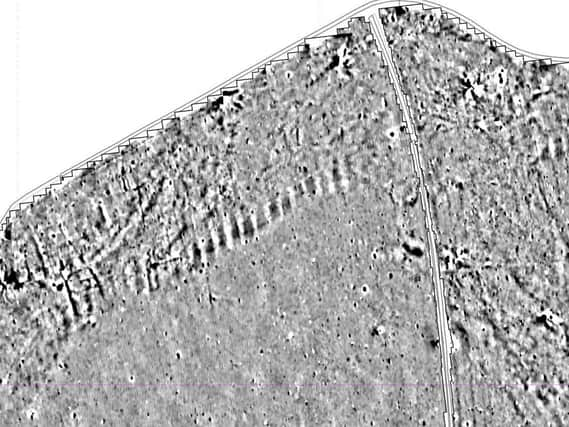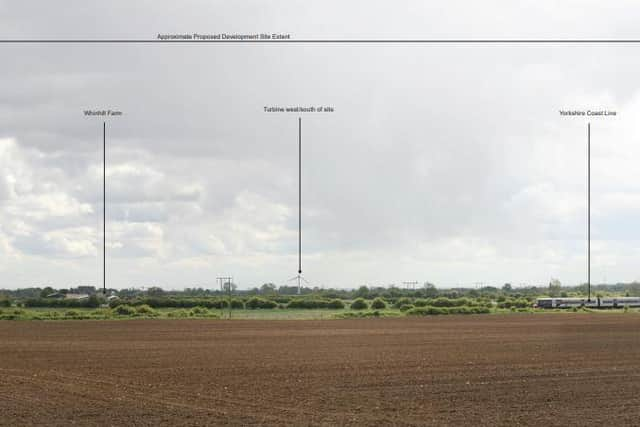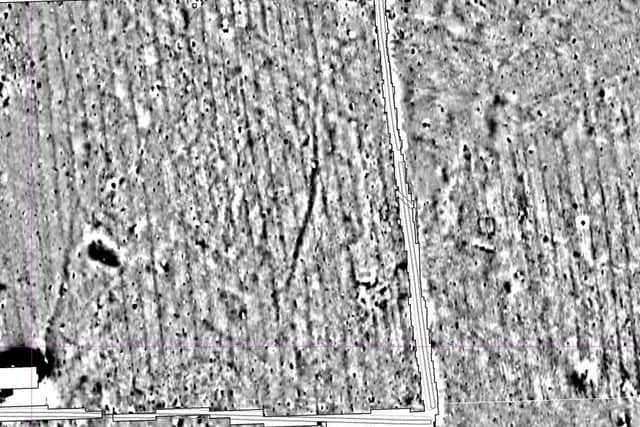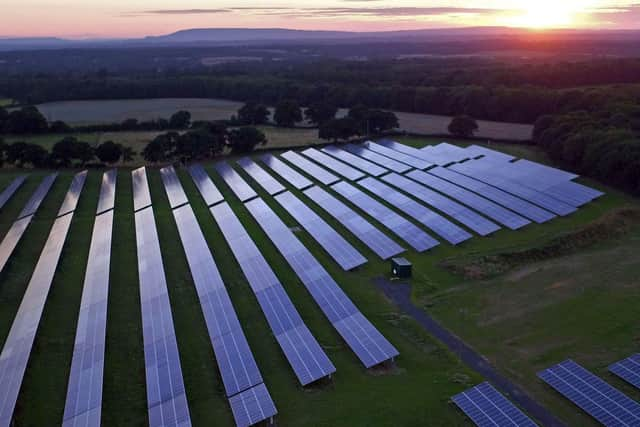Ancient remains found in fields in East Yorkshire earmarked for new solar farm


A geophysical survey was carried out in April and May on 59 hectares of land at Skerne, near Driffield, where developers Harmony Energy have submitted plans for 99,000 solar panels.
The survey found a number of "anomalies" including what may be the remains of burial mounds, dating from the Iron Age to Romano-British period.
Advertisement
Hide AdAdvertisement
Hide AdThey include a square barrow, and a further possible square barrow in the east of the site; and two circular features, which could represent ring ditches in the north-west and east of the site.


Square barrows - which are unique to the region - were built as earthen mounds surrounded by a ditch and covering one or more bodies.
Often levelled by ploughing, the grave contents may survive beneath the surface of the ground.
Over 1,000 have been excavated in eastern Yorkshire including at Garton/Wetwang Slack, and most recently Pocklington, and they are often positioned along routeways and close to watercourses.
Advertisement
Hide AdAdvertisement
Hide AdA curving band of anomalies running through the centre of the site could be a possible "ladder settlement", a distinctive form of late Iron Age/Romano-British settlement based on a linear trackway.


The square barrows, ring ditches and ladder settlement had been previously recorded, but the recent survey also revealed what may be the remains of a long barrow, dating to the much earlier Neolithic period, spanning from around 4000BC to 2,500BC.
Some 500 long barrows are recorded in England. They represent the burial places of Britain's early farming communities.
One area with increased magnetic strength found in the north-west of the site may be a corn drier, an oven or a kiln.
Advertisement
Hide AdAdvertisement
Hide AdDocuments filed as part of a planning application to East Riding Council say construction of the solar farm could impact buried remains - which have a moderate to high probability of surviving - and a programme of mitigation will be needed.


The 30MW solar farm, which will supply energy for the equivalent of 8,000 homes, will connect directly into Northern Powergrid's Driffield substation.
In the third quarter of 2019, 40 per cent of the UK's electricity generation came from renewables, including 20 per cent from wind, 12 per cent from biomass and six per cent from solar.
Alex Thornton, director at Harmony Energy, said renewable energy, including solar, was critical to ensure the future security of the UK’s energy supply.
Advertisement
Hide AdAdvertisement
Hide AdHe said: "We are aware of the historical significance of this area and we have undertaken significant due diligence as part of our planning application. This includes a detailed assessment of the potential impacts of the construction and operation of the proposed development on cultural heritage interests, which involved a geophysical survey of the site.
“If the application is approved, we would expect East Riding of Yorkshire Council to require further investigative works prior to construction of the development and we will of course do everything to meet such requirements.
"This would most likely include provision of a Written Scheme of Investigation by an independent archaeologist, setting out the works required and the process to be followed should any archaeological remains be discovered. All works would be agreed with the Council’s archaeology team beforehand.
“We remain committed to protecting cultural heritage and will work with all relevant parties to ensure this.”
Comment Guidelines
National World encourages reader discussion on our stories. User feedback, insights and back-and-forth exchanges add a rich layer of context to reporting. Please review our Community Guidelines before commenting.